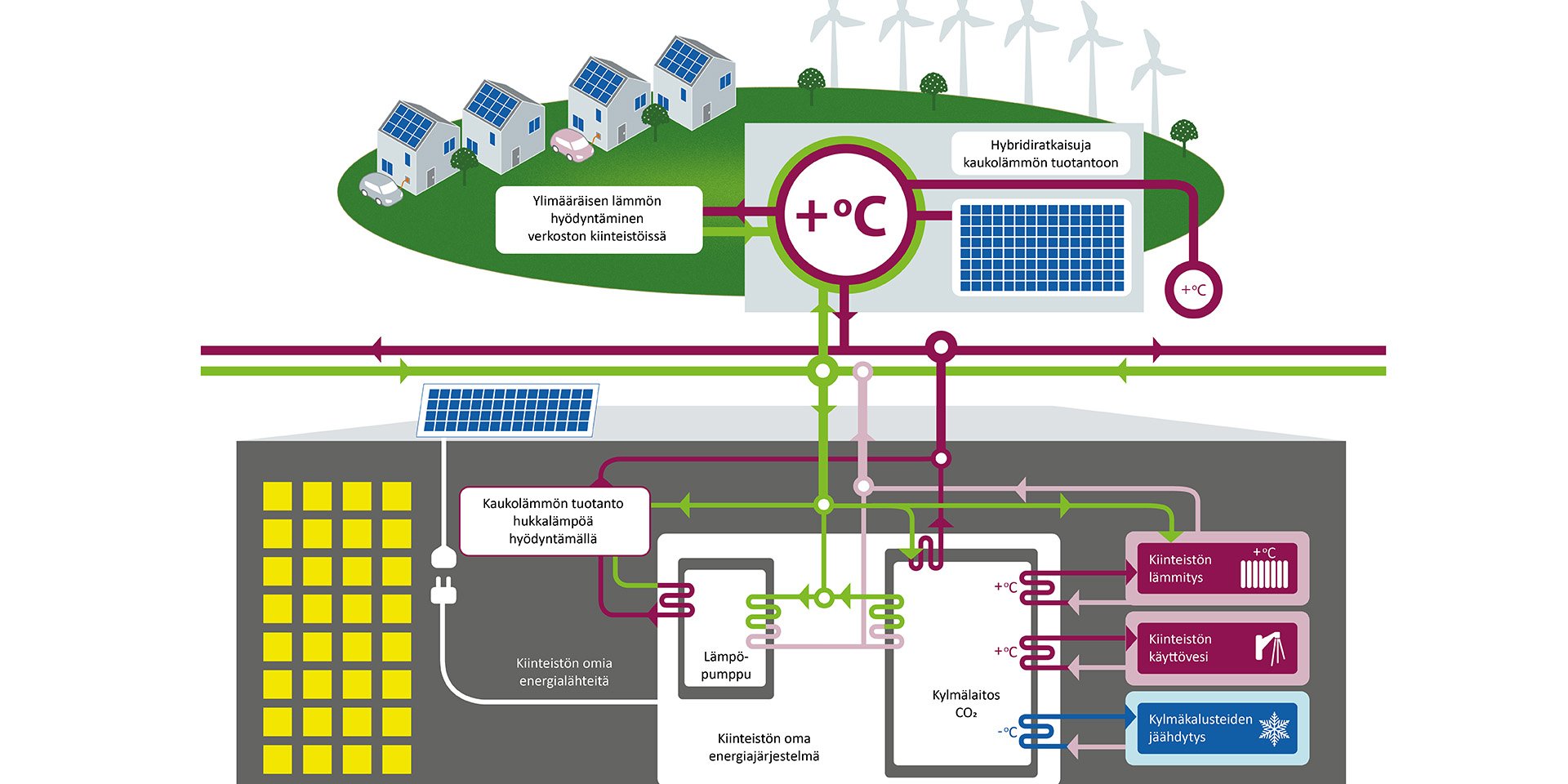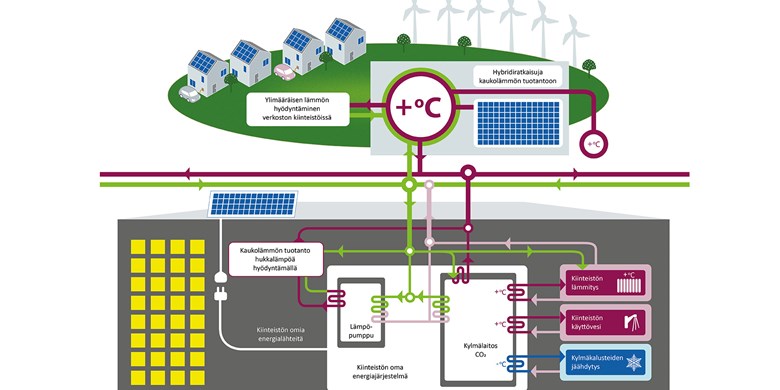Making use of wasted heat: Emission-free energy from S-Market to the district heating network
The innovation of Caverion, Osuuskauppa Arina, and Oulun Energia produces carbon-neutral district heat. The utilisation of the store's condensation heat is an excellent example of combining the city's energy system and property systems.
The innovation developed in cooperation by Caverion, Osuuskauppa Arina, and Oulun Energia will increase cost-effective carbon-neutral district heat production. This new way of managing energy flows offers a concrete means of mitigating climate change. VALOR Partners Oy and VTT have also participated in the verification of development work.
In the spring of 2022, Osuuskauppa Arina’s new S-Market will be completed in Ritaharju, Oulu, and it will produce emission-free energy for the district heating network. The energy system of S-Market is based on utilising the waste heat from the CO2 refrigeration plant of the property and the energy from the heat pump connected to the plant in the district heating network. The system is controlled by Caverion's intelligent automation system, which is integrated into the control systems of both the building and district heating production. In just under two years, the innovation has been implemented in full-scale industrial use.
According to VALOR Partners Oy's calculations, Ritaharju enables efficient production of up to 3 GWh of district heat on an annual basis without the need for burning fuel.
“At the same time, emissions will be reduced by over 500 tonnes, which corresponds to emissions from heating around 170 detached houses. In Finland, there are about 1000 stores of a similar or larger size, so the potential is significant,” Kalle Ahlstedt from VALOR Partners Oy summarises.
The store’s innovative energy solutions contribute to the efficiency of energy production plants, and both the store and energy companies benefit from this. The aim is to find a solution that reduces total energy consumption. Circular economy approaches are a key means of improving the efficiency of energy systems and reducing emissions.
“The example of Oulu demonstrates that significant results can be achieved through shared goals and working together. The technology has significant potential for both reducing carbon emissions and improving the energy efficiency of district heating networks,” continues Klaus Känsälä at VTT.
The innovation has a large impact on society in achieving carbon neutrality goals. Its wider utilisation requires a new kind of regional planning and the use of modern building technology to manage energy flows appropriately. This new kind of energy solution offers new perspectives for the implementation of wise resource solutions for planners, investors, developers, energy companies, building technology experts, and property maintenance professionals.

